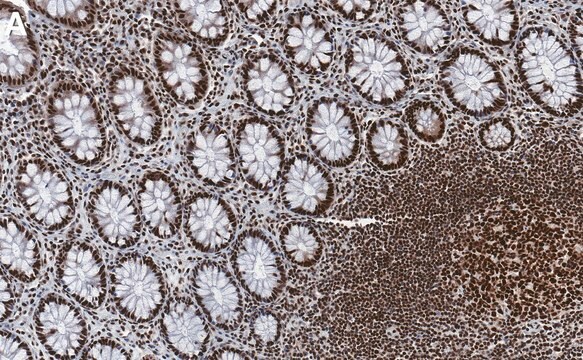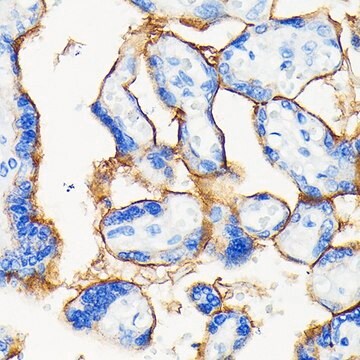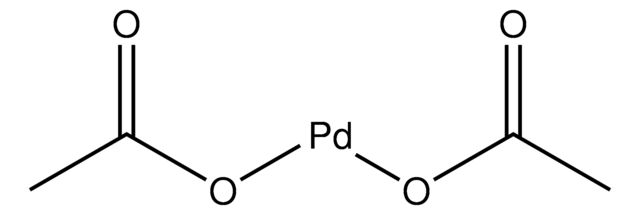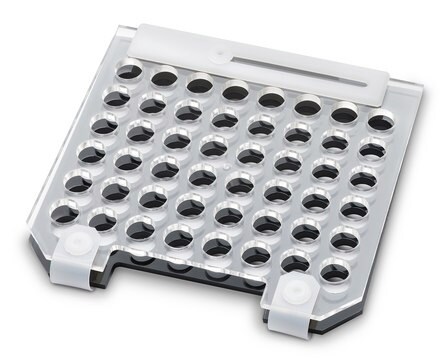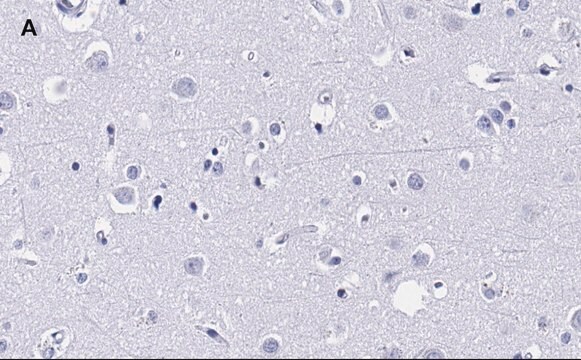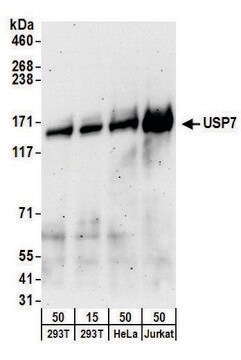ABC225
Anti-phospho USP7 (Ser18) Antibody
from rabbit, purified by affinity chromatography
Synonim(y):
Ubiquitin carboxyl-terminal hydrolase 7, Deubiquitinating enzyme 7, Herpesvirus-associated ubiquitin-specific protease, Ubiquitin thioesterase 7, Ubiquitin-specific-processing protease 7
About This Item
Polecane produkty
pochodzenie biologiczne
rabbit
Poziom jakości
forma przeciwciała
affinity isolated antibody
rodzaj przeciwciała
primary antibodies
klon
polyclonal
oczyszczone przez
affinity chromatography
reaktywność gatunkowa
human
reaktywność gatunkowa (przewidywana na podstawie homologii)
mouse (based on 100% sequence homology), rat (based on 100% sequence homology), porcine (based on 100% sequence homology), Xenopus (based on 100% sequence homology)
metody
inhibition assay: suitable (peptide)
western blot: suitable
numer dostępu NCBI
numer dostępu UniProt
Warunki transportu
wet ice
docelowa modyfikacja potranslacyjna
phosphorylation (pSer18)
informacje o genach
human ... USP7(7874)
Opis ogólny
Immunogen
Zastosowanie
Western Blotting Analysis: 0.02 µg/mL from a representative lot detected phospho USP7 (Ser18) in HeLa cell lysate (Prof. Grigory Dianov, University of Oxford, U.K.).
Western Blotting Analysis: 0.02 µg/mL from a representative lot detected 100 ng of phospho USP7 (Ser18), and not dephosphorylated USP7 (Prof. Grigory Dianov, University of Oxford, U.K.).
Alexa Fluor™ is a registered trademark of Life Technologies.
Apoptosis & Cancer
Apoptosis - Additional
Jakość
Western Blotting Analysis: 0.2 µg/mL of this antibody detected phospho USP7 (Ser18) in 10 µg of HeLa cell lysate.
Opis wartości docelowych
Postać fizyczna
Przechowywanie i stabilność
Informacje prawne
Oświadczenie o zrzeczeniu się odpowiedzialności
Nie możesz znaleźć właściwego produktu?
Wypróbuj nasz Narzędzie selektora produktów.
Kod klasy składowania
12 - Non Combustible Liquids
Klasa zagrożenia wodnego (WGK)
WGK 1
Temperatura zapłonu (°F)
Not applicable
Temperatura zapłonu (°C)
Not applicable
Certyfikaty analizy (CoA)
Poszukaj Certyfikaty analizy (CoA), wpisując numer partii/serii produktów. Numery serii i partii można znaleźć na etykiecie produktu po słowach „seria” lub „partia”.
Masz już ten produkt?
Dokumenty związane z niedawno zakupionymi produktami zostały zamieszczone w Bibliotece dokumentów.
Nasz zespół naukowców ma doświadczenie we wszystkich obszarach badań, w tym w naukach przyrodniczych, materiałoznawstwie, syntezie chemicznej, chromatografii, analityce i wielu innych dziedzinach.
Skontaktuj się z zespołem ds. pomocy technicznej